9 Camino de Santiago Routes: How to Choose the Best One
You’ve probably heard the saying, “All roads lead to Rome”.
The same goes for the Camino de Santiago routes. Regardless of the starting point of your walk, every pilgrim path leads to the Santiago de Compostela Cathedral.
So, which Camino route should you take?
In this guide, I’ve included detailed information about 9 different Camino routes. Before deciding, answer all questions as precisely as possible. By the end, you should know which Camino de Santiago route is the best for you.
Ready to start walking the Camino?
Let’s jump right in!
Disclaimer: This post contains affiliate links. If you purchase something through one of them, I may receive a small commission at no extra cost to you. Thank you for helping me create free content on this website!
1. What Are the Most Popular Camino de Santiago Routes?
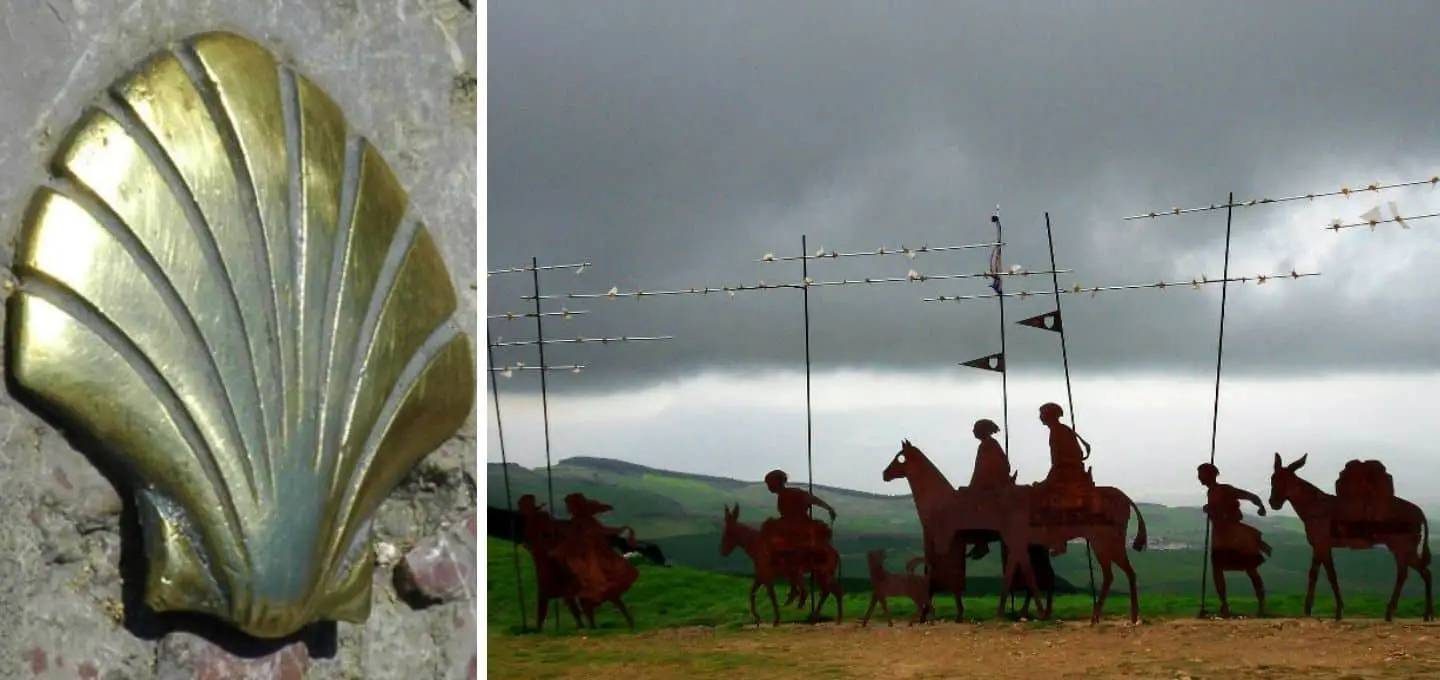
Below are the most popular Camino de Santiago routes. These also offer the most extensive infrastructure for pilgrims. Many other Camino routes exist, as well as variations of the popular ones with different starting points and alternative paths.
They all have one in common – the destination is always the same, Santiago de Compostela in Galicia, Spain, the final resting place of Saint James.
| Camino Route | Description | Length (km/mi) | Duration |
|---|---|---|---|
| Camino Francés | The busiest and most popular Camino route. Starts in France and crosses the Pyrenees. | 780 km 485 mi | 5 weeks |
| Camino Portugués | The second busiest Camino route. Starts in Lisbon and follows the Atlantic Ocean coastline. | 640 km 398 mi | 4 weeks |
| Camino Primitivo | The oldest and most authentic Camino route, from Oviedo. | 321 km 200 mi | 2 weeks |
| Camino del Norte | Starts at Irun and runs along the Bay of Biscay’s seashore, famous for its challenging terrain. | 825 km 513 mi | 5 weeks |
| Camino Inglés | The shortest Camino route to obtain a Compostela. The starting point is in Ferrol. | 155 km 96 mi | 6 days |
| Via de la Plata | The longest Camino route. Starts in Seville. | 1,000 km 621 mi | 7.5 weeks |
| Camino de Madrid | Starts in the Spanish capital and joins Camino Francés at Sahagún. | 322 km 200 mi | 2 weeks |
| Camino Finisterre | Runs east from the Atlantic Ocean’s coast. Often walked after reaching Santiago de Compostela. | 90 km 56 mi | 3 days |
| Jakobsweg | The most popular German Camino route starts in Görlitz. | 500 km 311 mi | 3 weeks |
The history of the religious pilgrimage to the burial site of Saint James – Santiago de Compostela Cathedral – dates back to the Middle Ages. Nowadays, people walk the Way of Saint James (English for Camino de Santiago) for all kinds of reasons.
Travelers from all over the world embark on the Camino de Santiago in search of personal growth, new friendships, stunning landscapes, captivating history, or even tasty dishes. Whatever you’re seeking on the Camino, if you choose your route wisely, you’ll come back transformed.
To have the greatest experience, you should follow the Camino de Santiago route that suits you best. Below, I go into detail about the first three paths since they’re the most popular and well-developed routes.
Now that you know your options, let’s figure out the other aspects of the pilgrimage.
2. How Much Time Can You Spare to Walk the Camino?
Your available time is the first thing you need to consider when choosing the right Camino route for you.
Here are the top three Camino de Santiago routes and their lengths:
- Camino frances: 780 km / 485 mi.
- Camino portugues: 640 km / 398 mi.
- Camino primitivo: 321 km / 200 mi.
As you can see, their lengths vary hugely. This is how much time you’ll need for them:
You Need 5 Weeks for the Whole Camino Frances
You can walk the most popular Camino route, the French Way, in about 35 days. Its whole length is 780 km. It starts in Saint-Jean-Pied-de-Port, France, and runs west over the Pyrenees and the border with Spain. Some of the bigger stops along the way are Pamplona, Burgos, and León.
Pilgrims usually spend from 31 to 35 days walking the Camino frances. Consider that you need to walk approximately 25 km (15.5 mi) per day, for a month. Factor in some free time to give your feet a proper rest, avoid injuries, and explore the sights along the most popular Camino route.
You Need 4 Weeks for Camino Portugues from Lisbon
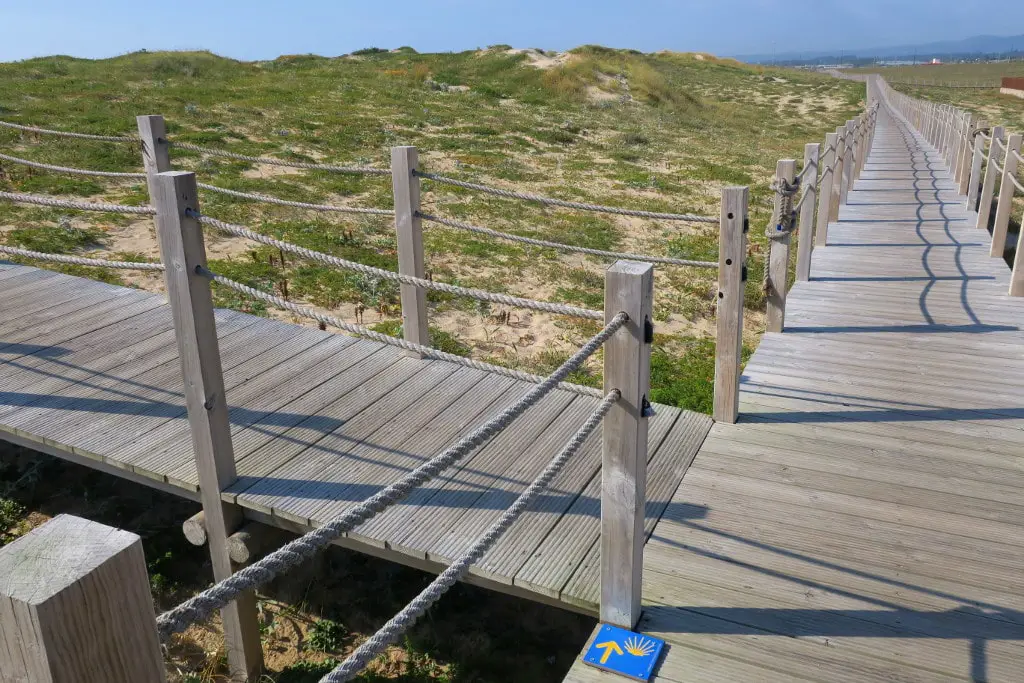
The Portuguese Way is second in terms of popularity.
It’s 640 km (398 mi) long all the way from the capital Lisbon and stretches 240 km (149 mi) from Porto, Portugal. This means that you need 24 to 28 days for the whole route and 11-12 days if you start in Porto.
Camino Portugués has at least two alternative routes after Porto. One follows the Atlantic Ocean coast, while the other goes inland. Both offer stunning vistas, but the coastal Camino route has a flatter surface.
You Need 2 Weeks for Camino Primitivo
The 321-km (200-mi) long Camino Primitivo starts in Oviedo, Spain. You can complete this Camino route in about two weeks.
Add 3 Days on Camino Finisterre to Your Camino Pilgrimage
If you want to continue walking after you’ve reached the Cathedral in Santiago de Compostela, add Camino Finisterre to your Camino pilgrimage. It takes about 3 days to walk the 90 km (56 mi) route to the Atlantic Ocean.
Usually, pilgrims walk this trail after they’ve completed another Camino route. On the rugged coast, they might burn their shoes and clothes. The fire symbolizes the end of their journey and the beginning of their new life chapter.
✔️Tip: If your time is limited, you have the following options:
- Choose a shorter route.
- Begin your pilgrimage closer to Santiago de Compostela.
- Use transportation for some of the stages of the Camino.
How Long Do You Need to Walk to Receive the Camino Compostela?
The Camino Compostela is the official certificate that proves you’ve finished the pilgrimage to Santiago de Compostela.
You will receive your pilgrimage certificate at the Santiago de Compostela Cathedral if you’ve walked at least 100 km (62 mi) to the burial site of St. James. Alternatively, you can claim your Compostela after cycling or riding a horse for at least 200 km (124 mi).
So, now you know your minimum distance goal!
That’s the reason Camino inglés is considered the shortest Camino route. It’s 155 km (96 mi) long and you can walk it in approximately 6 days.
3. Are You Fit Enough to Finish the Pilgrimage to Santiago de Compostela?
Despite being described as one of the easy hikes in Spain, the length and duration of walking is what makes the Camino so difficult.
So, when choosing your Camino de Santiago route, consider that you won’t be walking just a day or two for 25 km or 15.5 mi. You’ll need to have a fitness level that allows you to cover the distance for numerous days in a row.
Additionally, some routes have more challenging terrain than others.
For example, Camino frances takes you over the Pyrenees. Although picturesque, the hike in the border region might not be your cup of tea.
On the other side, Camino portugues is a coastal walk with equally stunning views but much flatter terrain. Plus, you get to explore the stunning historical cities of Lisbon and Porto!
Consider also that some of the stages will take you through towns and villages with cobble-stoned streets and over asphalt roads. These surfaces are much harder on your legs than nature trails.
Don’t forget the fact that you’ll be carrying your backpack for hours on end. Learn the tricks other pilgrims have used to optimize their luggage. For example, read this Camino del Norte packing list or check how to pack effectively for the Camino here.
✔️Tip: If you don’t want to carry your luggage all the time, you can hire a service to deliver it from one accommodation to the next. This way, you can enjoy your Camino walk without worrying about your back.
4. When Do You Plan to Walk El Camino de Santiago?

One of the questions all future pilgrims ask is, “When is the best time to walk the Camino?”
You can walk most of the Camino routes all year round. However, the best time is from April to October. Keep in mind that in spring and autumn, rains are common, while in the summer months, the temperatures can be sizzling hot.
Additionally, research if accommodations and eateries are open during the season you want to walk. Many albergues and restaurants close in the winter months. You don’t want to walk for 25 km (15.5 mi) only to find out you can’t find a bed for the night or food to replenish your energy!
Here’s an idea of when to walk the most popular Camino routes:
- You can walk Camino frances almost all of the year. Just keep in mind that the first section through the mountains becomes difficult to pass in the winter months.
- The coastal routes like Camino portugues are perfect for spring and summer, from April to October, but might be too rainy and windy in winter.
- Camino primitivo takes you through mountains and along the rugged coastline. It can get muddy, windy, and cold in early spring and late autumn. Walking this route in winter is not advisable.
5. What Experiences Do the Different Camino Routes Offer?
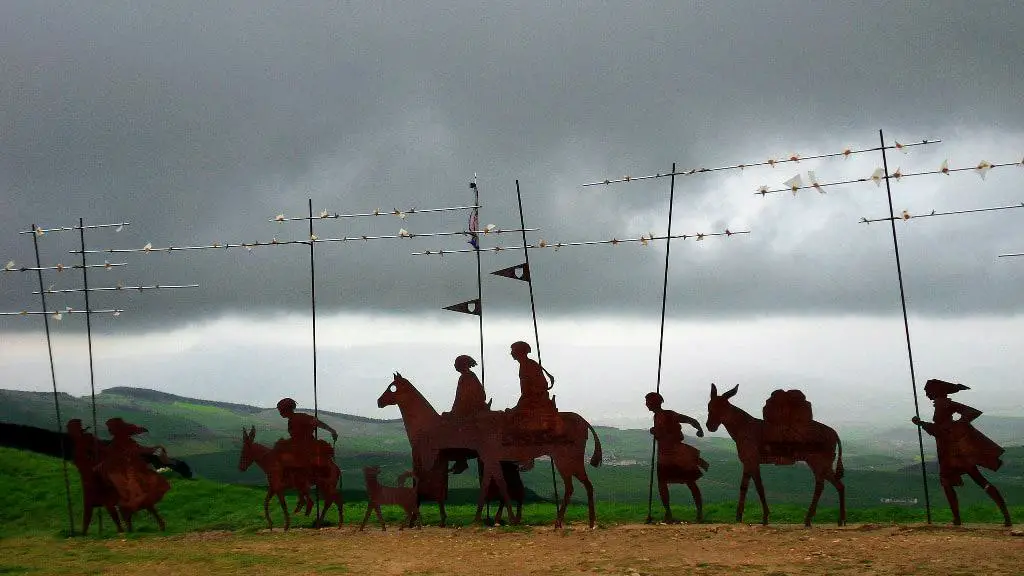
The most important aspect of walking the Camino is the journey itself, not the destination.
Many roads will take you to Santiago de Compostela. Of course, it is important to consider the length of the route, your fitness level, and the time of the year. But so is the kind of experience you want to have.
Ask yourself, “Why do you want to walk the Camino de Santiago?”
- Are you searching for solitude and time with your own thoughts?
- Do you want to meet new people and explore new places with them?
- Do you want to disconnect from your daily life and enjoy nature?
- Are you a food aficionado trying to discover the tastiest seafood dishes?
Here are the things you need to consider when choosing a Camino route to match your personality and expectations:
Camino Primitivo: Searching for Solitude and Spirituality
If you are looking to disconnect from the world, consider walking the Camino primitivo.
The Original Way is the oldest Camino de Santiago route. Records show that King Alfonso II took this path to visit the tomb of Saint James in the 9th century.
On this Camino route, you’ll explore sparsely populated, mountainous areas and admire breathtaking scenery. Not many pilgrims choose to walk it. Therefore, you can expect a peaceful and liberating experience.
However, since the route is less popular, it has fewer tourist attractions and restaurants than other Camino routes. Your solitude might come at a high price. So, consider both sides of the coin before venturing on your journey.
Camino Frances: Making New Friends and Discovering Places Together
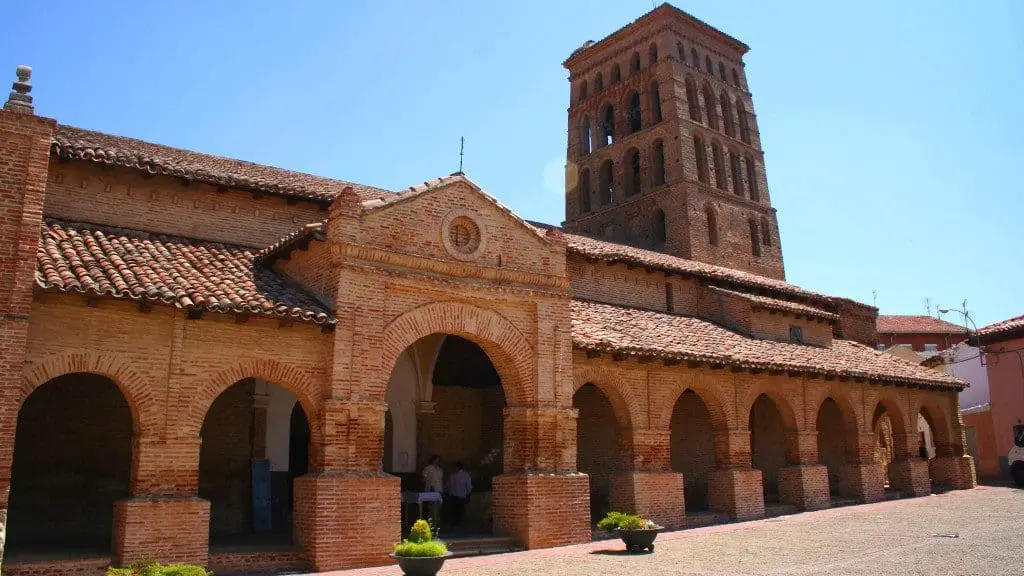
On the other end of the spectrum is Camino frances. The French Way is the busiest and most popular of all Camino de Santiago routes.
If you want to meet new people, share the pilgrimage experience, and explore new places with fellow travelers, this is the right option for you. Many pilgrims consider it the most beautiful route, so you won’t run out of things to see and do. This route also has the best infrastructure for pilgrims.
However, the price you have to pay is the huge number of people roaming the streets of every charming town you’ll pass. Racing to accommodations to secure a bed for the night is also a thing on the Camino frances.
To avoid the stress of arriving at a fully booked house, you can make a reservation in advance. Check my resource on how to find cheap travel accommodation. Of course, pre-booking takes away the spontaneity of the walk, so make sure to leave some room for flexibility as well.
✔️Tip: If you select the French Way over other options but want to avoid the crowds, don’t walk it in summer.
Camino Portugues: Admiring Landscapes and Enjoying Fewer Crowds
The Portuguese Way is a nice blend of all the pros and cons of the previous two Camino de Santiago routes.
It is neither lonely nor crowded. Its infrastructure for pilgrims is well-developed so you won’t have any problems finding places to eat and sleep. But most importantly, you’ll be spellbound by the landscapes and astonished by the historical sites.
Camino portugues has a captivating past. The first people who walked it didn’t go on a religious pilgrimage. They were creating commercial connections between their neighboring countries, which are still in use today.
Which Camino de Santiago Route Will You Choose?
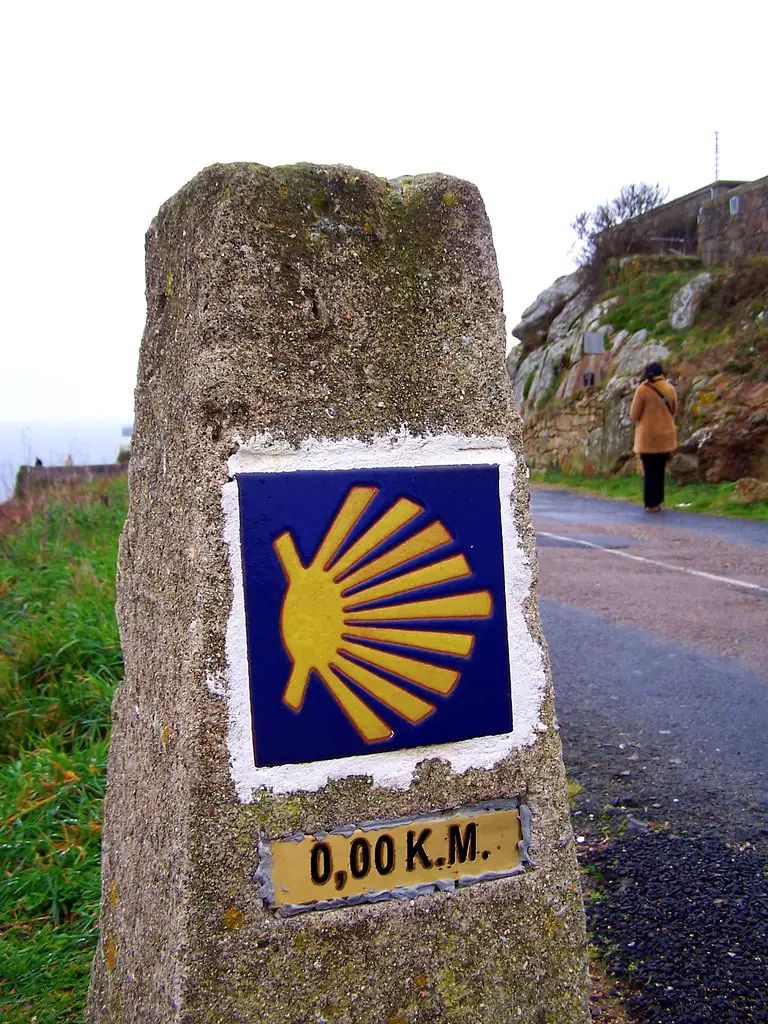
To recap, here is what the three most popular Camino de Santiago routes have to offer:
- Camino frances:
- the best infrastructure,
- great sightseeing options,
- diverse terrain,
- walkable (almost) all year round,
- different options for starting points along the way, and
- many fellow pilgrims to start new friendships with.
- Camino portugues:
- good infrastructure,
- mostly flat terrain,
- stunning views,
- different starting points to suit your available time, and
- fewer crowds but enough people to share the experience with.
- Camino primitivo:
- solitude,
- authentic experience,
- diverse terrain, and
- it can be walked in just two weeks.
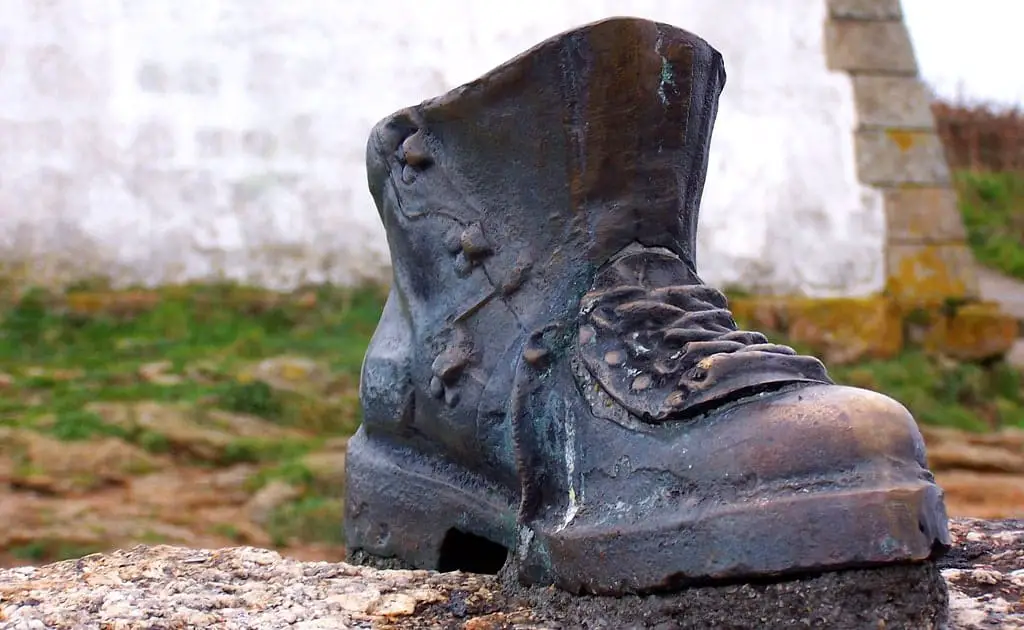
Every Camino is different.
No matter which route you choose, be open to every new experience and new person you meet. Leave all prejudice behind, forget your problems, and try to rediscover your strengths while walking to Santiago de Compostela.
Whatever you are searching for, you can find it along the way.
¡Buen Camino! Bom Caminho! Bon chemin! Bon Camiño!
FAQs About the Camino de Santiago Routes

What is the most beautiful Camino route?
In terms of natural beauty, the most beautiful Camino route has to be the Camino del Norte. The north route goes through some of the most stunning landscapes and cities of Spain and follows the coastline of the Bay of Biscay. You’ll walk through San Sebastian, Bilbao, and Gijón, before heading to Santiago de Compostela.
What is the best Camino de Santiago route for beginners?
In terms of logistics, the easiest Camino route to walk is Camino francés. However, its terrain isn’t the most beginner-friendly. If you want less challenging terrain, choose Camino portugués instead. The Coastal Portuguese Way is much flatter than other Camino routes, has a good pilgrimage infrastructure, and doesn’t require a high level of fitness.
How long does it take to walk the Camino de Santiago?
The entire Camino francés route requires around 35 days of walking. For the whole Camino portugués, you need about 28 days, while you can walk the Camino primitivo in 14 days. Camino del norte is walkable in 35 days and Camino inglés – in only 6 days. For the longest Camino route, Via de la Plata, you’ll need about 55 days, and for the Camino Finisterre – only 3 days.
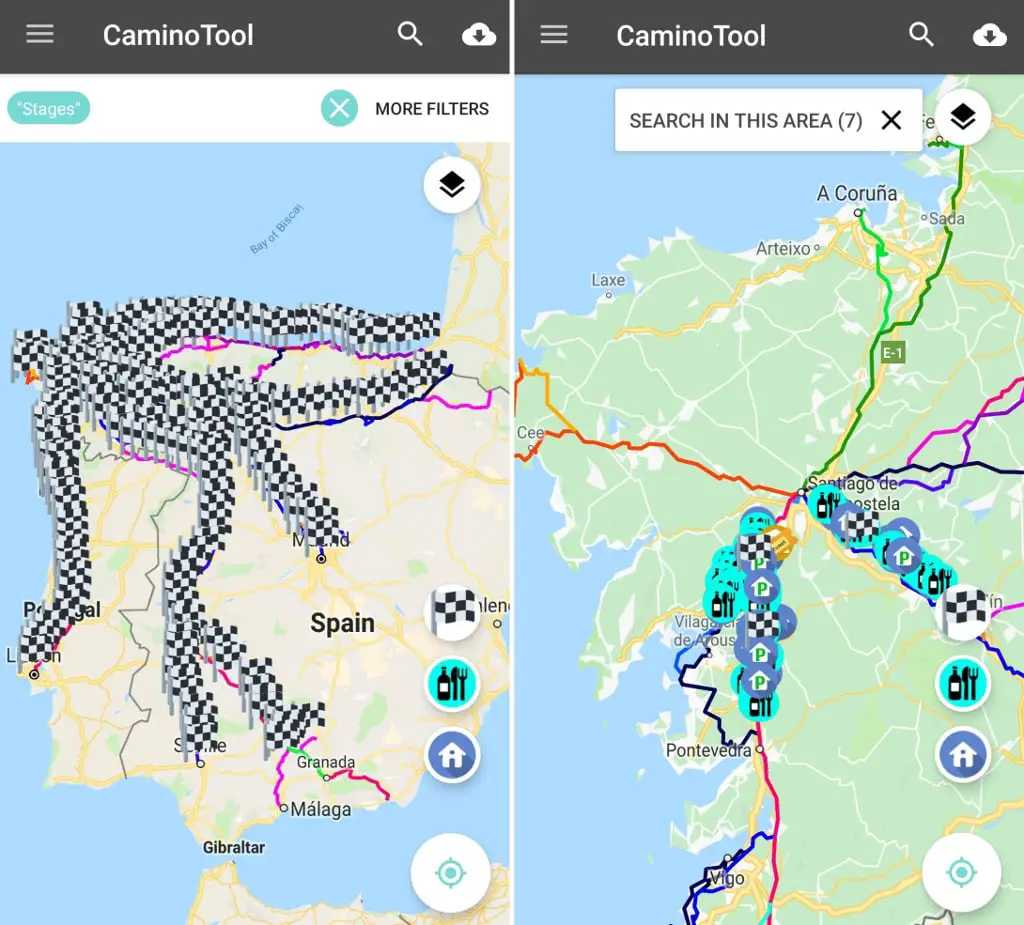
What is the best month to walk the Camino de Santiago?
The best time to walk Camino de Santiago in terms of weather is in May and September. Fewer people are walking in these months, the rains are rare, and the temperatures are warm but not hot.
Avoid walking el Camino in the summer months. The heat and the crowds will exhaust you. Some routes are difficult to pass in the winter months, and many establishments close between November and April.
What is the easiest Camino to walk?
In terms of terrain, the easiest Camino route to walk is the Portuguese Way. The coastal walk offers flat surfaces with little denivelation. If the whole route from Lisbon seems too long for you, choose the more popular and shorter option from Porto.
In terms of distance, Camino inglés is the shortest of the Camino routes. It’s 155 km (96 mi) long and takes 6 days to complete. If you can’t handle walking long distances of 25 km (15.5 mi) every day for several weeks, this is the shortest Camino route, which still lets you obtain a Compostela certificate.
Which Camino route is the most popular?
The most famous Camino route is Camino francés. It’s been featured in books like The Pilgrimage by Paulo Coelho and movies like The Way with Martin Sheen. It passes through stunning landscapes and beautiful historic cities in France and Spain. Unfortunately, it’s also the most crowded of the Camino routes.
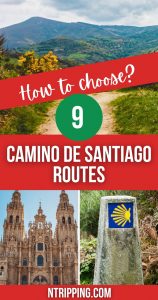
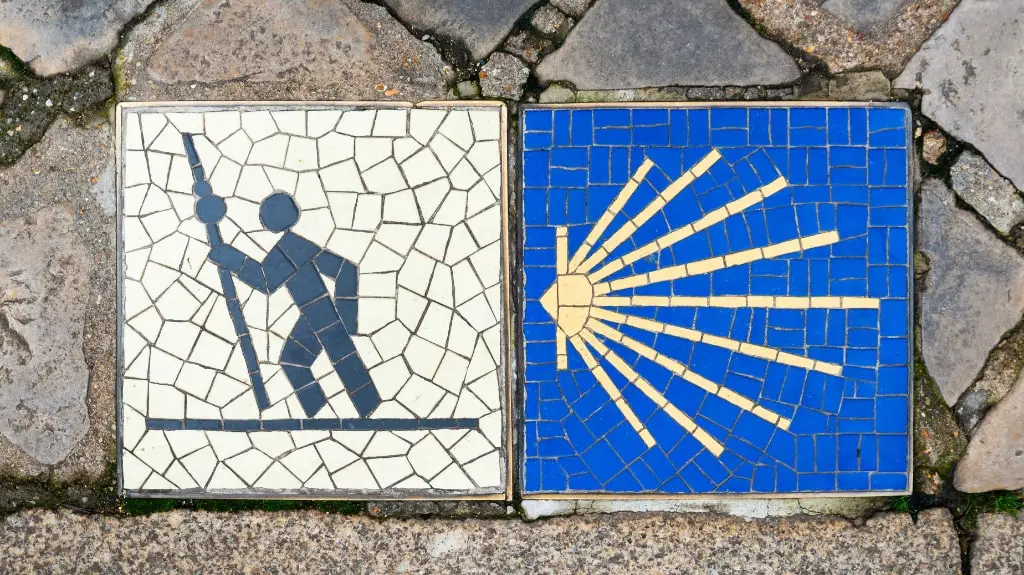
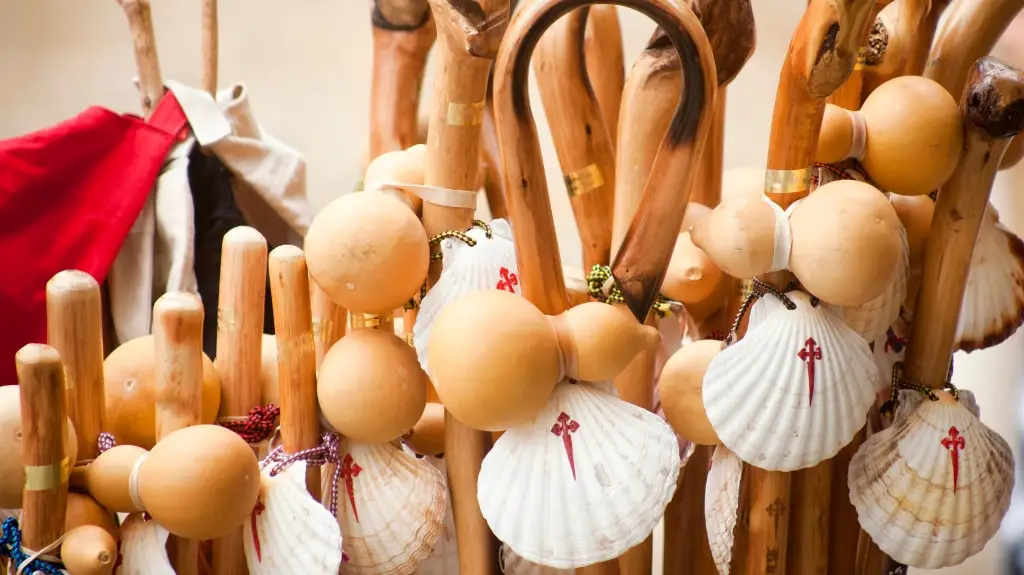

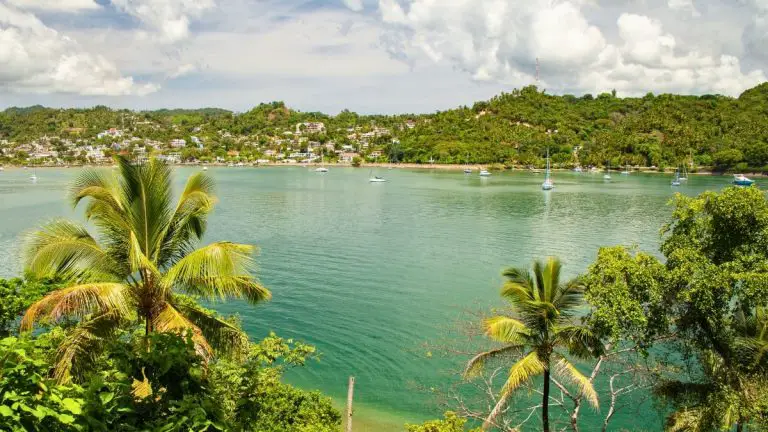
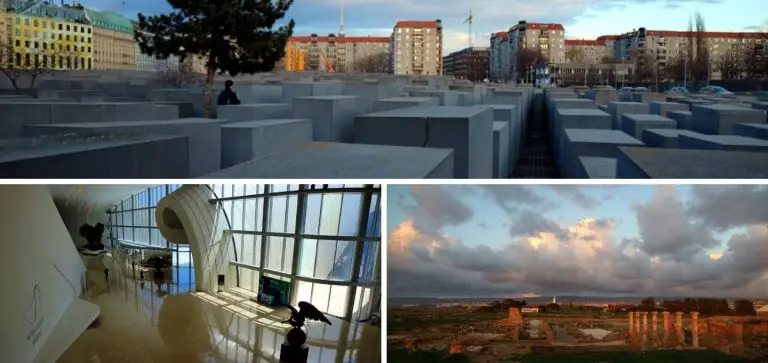


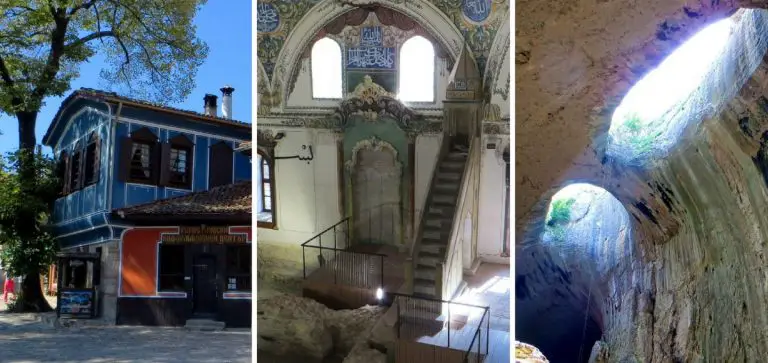

I can’t imagine how good it must feel to travel alone through the Spanish plain, it must even transport you to the past, an excellent guide for everyone!
Thank you, Alex! El Camino is truly a unique experience :)
am interested in the camino portugues way, but needs a shorter distance than can be covered in a week walking. kindly give me some more details, like places to stay for the night (pre-booked? how), our baggages since we will be travelling fm far away Philippines, can we have it brought to the hotel ahead of us, so that we will just walk with a few kilos on our back? what is the nearest international airport at the end of the pilgrimage where we can fly out to Asia? many more later, planning to do this by 2022 yet thank you very much.
Hi Teodorico,
if you want to walk Camino Portuguese in one week, you need to start north of Porto somewhere close to the border between Portugal & Spain. Check the Camino Tool App for the best route.
For booking accommodations, you can use Booking.com or your favourite booking app.
At the end of your pilgrimage, you probably want to go to Madrid for the best flight options. There are direct express trains from Santiago to Madrid, which will take you to the Spanish capital in about 4:30 hours.
If you need a customized travel itinerary, you can check this service.
Cheers,
Naddya
Interested in trying to determine the best route for myself. Have never done this before, am a relatively fit 70 year old.
Hey Lauren,
I’d recommend the Portuguese Way as it’s not steep at all.
You can either start it in Porto or in Lisbon. From Porto, you’ll need about two weeks to walk it. From Lisbon, you’ll require approximately four weeks.
Hope this helps!
Buen Camino!
Cheers,
N.